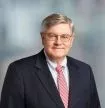On June 27, 2022 the United States Supreme Court surprised many observers by holding that the free exercise and free speech rights of a football coach employed by a public school were violated when his employment was terminated after he refused to comply with a school district directive not to pray publicly on the football field after games. Both the district court and Ninth Circuit Court of Appeals had rejected the coach's arguments that the directive violated his First Amendment rights on the basis that the coach's actions could be seen as state support for religion in violation of the Establishment Clause. On a 6-3 vote, however, the United States Supreme Court reversed. Justice Sotomayor issued a dissenting opinion in which Justices Breyer and Kagan joined.
In Kennedy v. Bremerton School District, No. 21-418, 597 U.S. __ (2022), the Court described the facts of the case as follows. Joseph Kennedy, the coach, engaged in two practices that the school district found objectionable: (1) leading players in a pre-game prayer in the locker room (a practice that predated the coach's employment), and (2) including overtly religious references in post-game motivation speeches "likely constituting prayer" with students at mid-field. The coach ended both practices. But he asked for "the opportunity to wait until the game is over and the players have left the field and then walk to mid-field to say a short, private personal prayer." Consistent with then applicable precedent under the Establishment Clause, district officials denied that request, and they forbade Mr. Kennedy "from engaging in 'any overt actions' that could 'appear to a reasonable observer to endorse . . . prayer . . .while he is on duty as a District-paid coach." Despite that directive, the coach engaged in prayer at mid-field on three separate occasions thereafter, whereupon he was suspended and ultimately dismissed from employment as a coach.
Writing for the majority, Justice Gorsuch noted that the three constitutional principles involved here – free speech, free exercise, and establishment – are all included in one sentence in the First Amendment, and he expressed the view that these principles should be reconciled, not seen in conflict. The Court started its analysis by noting that the district's prohibition of such prayers was clearly based on the religious nature of the coach's actions, which implicated his free exercise rights. The Court then determined that the prohibition also implicated the coach's free speech rights, because the prohibition related to the content of the coach's speech.
Finding that Mr. Kennedy had properly raised both free exercise and free speech issues, the Court then considered whether the prohibition against such prayer was required by the Establishment Clause. The Court rejected the district's claim that the "tension" between the Free Exercise Clause and the Establishment Clause required the prohibition. In so doing, the Court drove another nail into the now-dead Lemon Test first articulated in Lemon v. Kurtzman, 403 U.S. 602 (1971). Prong two of that Test (that the governmental action should neither advance nor inhibit religious activity) may have justified the prohibition on the basis that a reasonable observer could view the coach's prayer as government endorsement of religion. However, the Court noted that it has rejected the Lemon test in various other cases, and it distinguished other cases in which prayer by school officials violated the Establishment Clause.
Surprisingly, the Court reached its conclusion by asking whether Mr. Kennedy "offered his prayers in his capacity as a private citizen" or "did [his prayers] amount to government speech attributable to the district." Without hesitation, the Court found that (1) Mr. Kennedy did not engage in speech "ordinarily within the scope" of his duties as a coach and (2) he was not seeking to convey a government-created message. In the words of the Court, "Simply put: Mr. Kennedy's prayers did not 'ow[e their] existence' to Mr. Kennedy's responsibilities as a public employee. . . . The prayers for which Mr. Kennedy was disciplined were not publicly broadcast or recited to a captive audience. Students were not required or expected to participate. And, in fact, none of Mr. Kennedy's students did participate in any of the three October 2015 prayers that resulted in Mr. Kennedy's discipline." Relying on those facts, the Court found that the "private prayers" of the coach (on the 50-yard line immediately after a game) did not violate the Establishment Clause.
Finally, the Court considered whether such prayers by the coach immediately after the game could improperly coerce students to engage in religious activity. However, the Court stated that there is no evidence in the record of coercion of students (noting that no students attended the prayers after the three games in question). Moreover, the Court emphatically rejected the idea that any religious activity by a school employee visible to students is inherently coercive: "In the name of religious liberty, the District would have us suppress it. Rather than respect the First Amendment's double protection for religious expression, it would have us preference secular activity."
This case continues the Court's move away from traditional Establishment Clause jurisprudence to a new approach where religious activity in the public sphere is protected from the special disfavor previously thought mandated by the Establishment Clause under Lemon and a number of previous cases. See also Carson v. Makin, 596 U.S. __, (2022), WL 2203333 (2022). School officials must now be vigilant in differentiating between private religious speech by school employees, which in the Court's view is "double-protected" by the Free Exercise and Free Speech Clauses, and proselytization by school officials, which would still be a constitutional violation.
The content of this article is intended to provide a general guide to the subject matter. Specialist advice should be sought about your specific circumstances.

